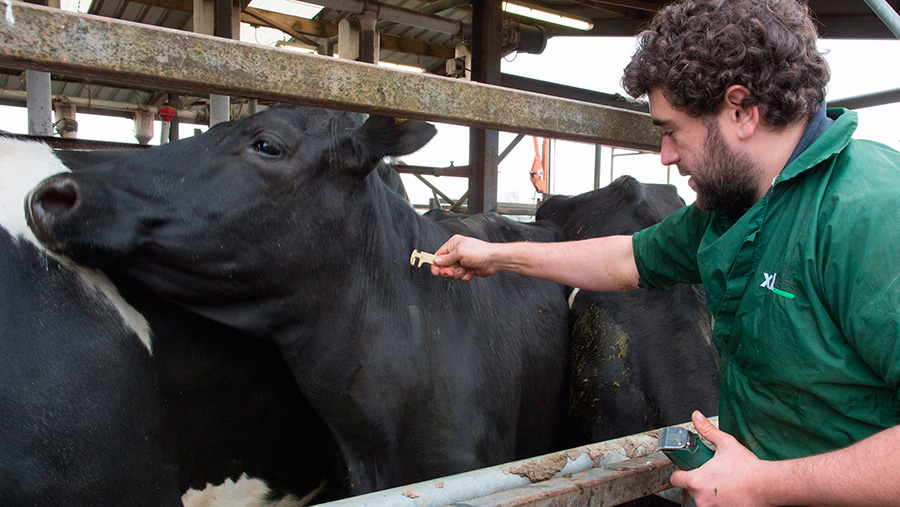Defra figures show 7% drop in new cases of TB in ‘high-risk’ areas
 © Tim Scrivener
© Tim Scrivener New TB outbreaks in cattle in high-risk areas have fallen by 7%, raising hopes the government’s 25-year eradication strategy is beginning to make a difference.
The statistics, collated by Defra, showed 3,725 new herd incidents of TB were recorded in the 12-month period to March in the high-risk area in England – a 7% year-on-year reduction.
The NFU welcomed the slight fall in new herd incidents, but said it would “be of small comfort” to the 3,725 farmers whose herds had previously been TB-free.
See also: Welsh cattle slaughterings increase 22% due to TB
The figures also showed TB incidents in counties on the edge-area of the disease, including Cheshire, Berkshire, Hampshire and East Sussex, rose by 5% from 359 to 377.
However, TB cattle slaughterings remain stubbornly high in the UK, increasing by 5.9.% to 39,360 to the end of February from 37,175 over the same period in 2016.
In Wales, where there is an annual TB testing regime, but no badger culling, the number of new herd incidents dropped by 14% from 788 to 675. According to Wales’ chief veterinary officer Christiane Glossop, this is the lowest number of new TB herd incidents for 12 years.
Number of new #bovineTB incidents is at its lowest for 12 years https://t.co/rVWjdjs9jv
— Christianne Glossop (@CVOWales) May 17, 2017
However, 9,773 TB-infected cattle in Wales were culled in the 12 months up to February, a 15% increase from 8,475 over the previous 12 months.
In England, more than 14,800 badgers have been culled since the Conservatives launched a badger culling policy in 2013, as part of efforts to tackle bovine TB.
The Conservatives have announced they would continue badger culling if re-elected. But the Labour Party has pledged to abandon the cull in favour of cattle and badger vaccination, if it wins the general election on 8 June.
Badger cull essential, says NFU
An NFU spokesman said: “It is essential that all aspects of the TB eradication strategy are implemented in full to give us the best chance of controlling and eradicating this disease.
“Alongside this, while badger vaccination is currently unavailable due to a shortage, it is still crucial we get as accurate a picture as possible of the infection rate in badgers in the ‘edge’ area so vaccination – when it is available again – can be targeted in the most effective way.”
However, Dominic Dyer, CEO of the Badger Trust, described the badger cull as “at best is a distraction – and a costly one at that”.
“If you take badgers out of the equation, what these figures really show is that stricter cattle-based controls are working to reduce TB levels. This is of great credit to farmers.
“I would say that the significant reduction of TB in high-risk areas is down to stricter cattle measures. This is borne out by the figures for Wales, where there is no culling and stricter testing, yet new herd incidents have gone down by 14%.”
